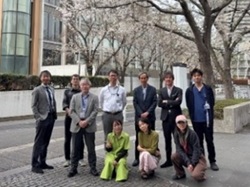Tokyo Women's Medical University
TEL. 03-3353-8111
〒162-8666 8-1, Kawada-cho, Shinjuku-ku, Tokyo
Graduate School of Medical Science
Graduate School of Medical Science
Advanced Techno-Surgery
About us
Our laboratory conducts research and development aimed at realizing advanced healthcare through the utilization of cutting-edge technologies such as AI and robotics. In particular, our research on information-guided surgery, centered on intelligent operating rooms, integrates various modalities—including intraoperative MRI, OCT, photodynamic diagnosis, and functional testing—to improve surgical quality. We are also promoting the development of surgical support robots and therapeutic devices in collaboration with clinical departments, as well as clinical prediction using AI and remote support systems. Furthermore, we are working on the social implementation of technologies such as mobile SCOT and home healthcare robots. In addition, we place strong emphasis on regulatory science for medical devices, fostering human resources with a broad perspective through an integrated system that spans from basic research to clinical application and commercialization.
Research
Joint Clinical Trials and Inter-Departmental
Research
・Smart Cyber Operating Theater
・Mobile Smart Cyber Operating Theater
・Research and Development of Surgical Assistive Robots and Devices
・AI-Based Risk Evaluation for Patient Safety during Intraoperative Language Function Testing
・Initiatives for PPI (Patient and Public Involvement) Research Using Technology
・Regulatory Science for Medical Devices
The above are just a few examples of the many issues in various medical fields that are being addressed, including clinical research on jointly developed themes with graduate students.
Faculty
Professor:
MASAMUNE Ken
 Associate Professor:
TAMURA Manabu, KITAHARA Shuji,
Associate Professor:
TAMURA Manabu, KITAHARA Shuji,
IIZUKA Yukie (on joint appointment)
Lecturer:
YOSHIMITSU Kitaro, ISHIKAWA Tatsuya (on joint appointment), INANOBE Naoko (on joint appointment)
Assistant Professor:
TOMINAGA Ayako (on joint appointment) ,
HARA Shintaro (on joint appointment)
Related links
Research Achievements Database
バナースペース
Tokyo Women's Medical University
〒162-8666
8-1, Kawada-cho, Shinjuku-ku, Tokyo
TEL +81-3-3353-8111